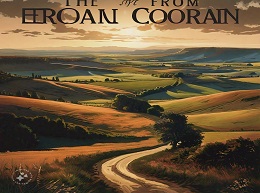The Satanic Verses
Exploring the Controversy and Craft of The Satanic Verses
Salman Rushdie’s The Satanic Verses is a novel that has incited widespread controversy and fervent debate since its publication in 1988. Its blend of magical realism, historical fiction, and religious commentary has made it both a literary masterpiece and a focal point of intense scrutiny. This review delves into the novel’s complex narrative, rich themes, and the socio-political uproar it ignited. By exploring these aspects, we aim to understand the multifaceted nature of Rushdie’s work and its lasting impact on literature and society.
A Tale of Two Survivors
The Satanic Verses begins with a dramatic event: a terrorist attack on a plane, resulting in the miraculous survival of two Indian expatriates, Gibreel Farishta and Saladin Chamcha. As they fall from the sky, Gibreel, a Bollywood star, and Saladin, a voiceover artist, undergo a series of surreal transformations. Gibreel assumes the characteristics of the archangel Gabriel, while Saladin takes on the guise of a demon. This transformation sets the stage for a sprawling narrative that interweaves their personal stories with broader historical and religious themes.
Gibreel and Saladin’s Journeys
The novel alternates between the contemporary experiences of Gibreel and Saladin and a series of fantastical and historical subplots. Gibreel grapples with his new identity and struggles to reconcile his faith with his experiences, while Saladin deals with the fallout of his transformation and his estranged relationship with his heritage and family. Their journeys are marked by encounters with various characters, each contributing to the novel’s exploration of identity, faith, and redemption.
The Mahound Narrative
One of the most contentious aspects of the novel is the story of Mahound, a fictionalized version of the Prophet Muhammad. This narrative, presented as a dream sequence experienced by Gibreel, explores themes of religious authority, revelation, and interpretation. Rushdie’s portrayal of Mahound and the early days of Islam provoked significant backlash, leading to accusations of blasphemy and calls for the book’s ban.
Identity and Transformation
At its core, The Satanic Verses is a novel about identity and transformation. Gibreel and Saladin’s physical and spiritual metamorphoses serve as metaphors for the broader human experience of grappling with self-identity. Rushdie explores how cultural, religious, and personal identities are constructed, deconstructed, and reconstructed throughout one’s life. The novel’s fantastical elements underscore the fluidity and complexity of identity, challenging readers to reflect on their own understandings of self.
Faith and Doubt
Faith and doubt are central themes in The Satanic Verses. Through the character of Gibreel, Rushdie examines the tension between belief and skepticism. Gibreel’s internal struggle with his faith, exacerbated by his perceived role as an angelic figure, highlights the difficulties of maintaining religious conviction in the face of personal and societal challenges. The novel questions the nature of religious truth and the role of interpretation in shaping belief systems.
Colonialism and Postcolonialism
Rushdie, an Indian-born British author, infuses the novel with a postcolonial perspective, critiquing the lingering effects of colonialism on identity and culture. Saladin’s character embodies the immigrant experience, dealing with issues of assimilation, discrimination, and the search for belonging in a foreign land. The novel’s historical subplots, including the Mahound narrative, also reflect the power dynamics and cultural conflicts inherent in colonial and postcolonial contexts.
The Power of Storytelling
Storytelling itself is a prominent theme in The Satanic Verses. Rushdie’s narrative structure, which blends realism with magical realism and interweaves multiple storylines, underscores the power of stories to shape reality and influence perception. The novel suggests that stories are not merely reflections of reality but active agents in creating and transforming it. This meta-narrative commentary invites readers to consider the role of fiction and narrative in their own lives.
Magical Realism
Rushdie’s use of magical realism is one of the novel’s defining features. By blending fantastical elements with realistic settings, he creates a narrative that feels both grounded and otherworldly. This style allows Rushdie to explore complex themes in a nuanced and imaginative way, making the surreal feel tangible and the ordinary seem extraordinary. The magical realism in The Satanic Verse challenges readers to suspend disbelief and engage with the narrative on multiple levels.
Nonlinear Narrative
The novel’s nonlinear structure, with its interwoven subplots and shifting timelines, reflects the fragmented and multifaceted nature of its themes. Rushdie’s narrative approach demands active engagement from readers, who must piece together the connections between different storylines and characters. This complexity enhances the novel’s depth and richness, rewarding careful and attentive reading.
Rich Symbolism
The Satanic Verses is replete with symbolism, much of which draws on religious and cultural references. The transformations of Gibreel and Saladin symbolize the duality of human nature and the constant struggle between good and evil. The city of Jahilia, featured in the Mahound narrative, represents moral and spiritual blindness. Through these and other symbols, Rushdie adds layers of meaning to the narrative, inviting readers to delve into its deeper implications.
Gibreel’s Angelic Visions
Gibreel’s visions of himself as the archangel Gabriel are both a literal and metaphorical exploration of faith. His inability to reconcile his divine role with his human doubts reflects the broader theme of religious uncertainty. For example, Gibreel’s encounters with religious figures and his experiences in a heavenly court highlight the conflict between divine authority and human frailty. These visions serve as a powerful commentary on the nature of faith and the struggle to find spiritual clarity.
Saladin’s Transformation
Saladin’s transformation into a demonic figure symbolizes his internalized feelings of alienation and resentment. His experience of being ostracized and persecuted after his transformation reflects the real-world struggles of immigrants and marginalized individuals. Saladin’s journey towards self-acceptance and reconciliation with his heritage is a poignant exploration of the immigrant experience and the quest for identity in a multicultural society.
The Mahound Narrative
The Mahound narrative is one of the most controversial and complex parts of the novel. Through this fictionalized account of the early days of Islam, Rushdie examines the power dynamics and interpretative nature of religious texts. The character of Mahound, who is portrayed with both reverence and critique, challenges readers to consider the ways in which religious narratives are constructed and used to wield power. This narrative serves as a profound meditation on the nature of revelation, authority, and faith.
Accusations of Blasphemy
Upon its publication, The Satanic Verses was met with widespread outrage, particularly from the Muslim community. Many perceived the novel’s depiction of the Prophet Muhammad and its questioning of Islamic tenets as blasphemous. The backlash culminated in violent protests, book bans, and even a fatwa calling for Rushdie’s assassination. This controversy highlighted the deep-seated tensions between freedom of expression and religious sensitivity.
Impact on Rushdie’s Life
The fatwa issued against Rushdie forced him into hiding for many years, significantly impacting his personal and professional life. Despite the threats and challenges, Rushdie continued to write and speak out in defense of free speech. The controversy surrounding The Satanic Verses has had a lasting impact on discussions about artistic freedom, censorship, and the boundaries of religious critique.
Literary and Cultural Legacy
Despite (or perhaps because of) the controversy, The Satanic Verses has secured a place in literary history as a groundbreaking and provocative work. It has sparked important conversations about the role of literature in society, the limits of free expression, and the complexities of religious and cultural identity. The novel’s enduring relevance attests to its power to challenge, provoke, and inspire.
Salman Rushdie’s The Satanic Verses is a multifaceted and deeply compelling novel that explores themes of identity, faith, and the power of storytelling. Its complex narrative, rich symbolism, and blend of magical realism create a reading experience that is both intellectually stimulating and emotionally resonant. The controversy surrounding the novel has only heightened its impact, prompting important discussions about freedom of expression and the role of literature in society.
For readers willing to engage with its challenging themes and intricate narrative, The Satanic Verses offers a profound and thought-provoking exploration of the human condition. It is a testament to Rushdie’s literary genius and his ability to weave together the personal and the universal in a way that continues to captivate and inspire.













